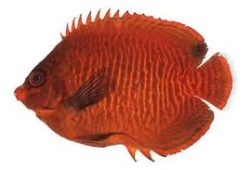Biotope-Based Marine Aquaria
The article gives a detailed analysis of Biotope-Based Marine Aquaria.

Contents
Interconnected Biotope Tanks Improve Overall System Stability
Diversity of Species versus Diversity of Habitat
The reef tanks maintained by many marine aquarists are often diverse in terms of species, but they seldom attempt to replicate the habitat diversity of the various interconnected biotopes essential for the health of the natural reef ecosystem. As such, even the most self-sufficient and self-contained reef tank tends to ignore the true expansiveness of a natural reef ecosystem, where the reef itself depends on connectivity with proximal non-reef habitats (e.g. seagrass beds and mangrove-fringed shorelines) for its health and stability.
A Healthier System and a More Knowledgeable Aquarist
The obvious reason aquarists do not attempt completely self-contained reef systems is that it is simply impossible to recreate a truly self-sustaining marine ecosystem in one’s home (or even in some of the Nation’s biggest and best public aquaria for that matter). Further, a variety of technologies (e.g. protein skimming, supplement dosing, etc.) effectively replicate the ecological functions of these interconnected natural biotopes, making the pursuit of a truly self-sufficient ecosystem unnecessary.
Just because external filtration may never be truly redundant in the home aquarium, however, doesn’t mean that experimenting with advanced, biotope-based filtration methods is pointless. In fact, the creative use of interconnected biotope-based aquaria allows the hobbyist to experiment with—and learn about—the interesting relationships found in the natural reef ecosystem. Best of all, the byproducts of all this experimentation are a healthier system and a more knowledgeable aquarist.
A Holistic Approach—The Science & the Hobby
Over a series of upcoming articles, several saltwater systems made up of multiple interconnected tanks (each representing a different naturally-occurring biotope) will be discussed in detail. The purpose of these articles will be not only to present clear “how-to” information about setting-up a similar system in your home, but also to further educate the aquarist about the natural ecosystems he or she is replicating through his or her involvement in the hobby.
The philosophy behind this series of articles is quite simple: the more knowledgeable the aquarist is about the natural ecosystem, the more successful he or she will be in the hobby AND the more attuned he or she will be to the plight of the world’s reefs. In short, this “biotoping” is a holistic approach located at the intersection of science and hobby.



